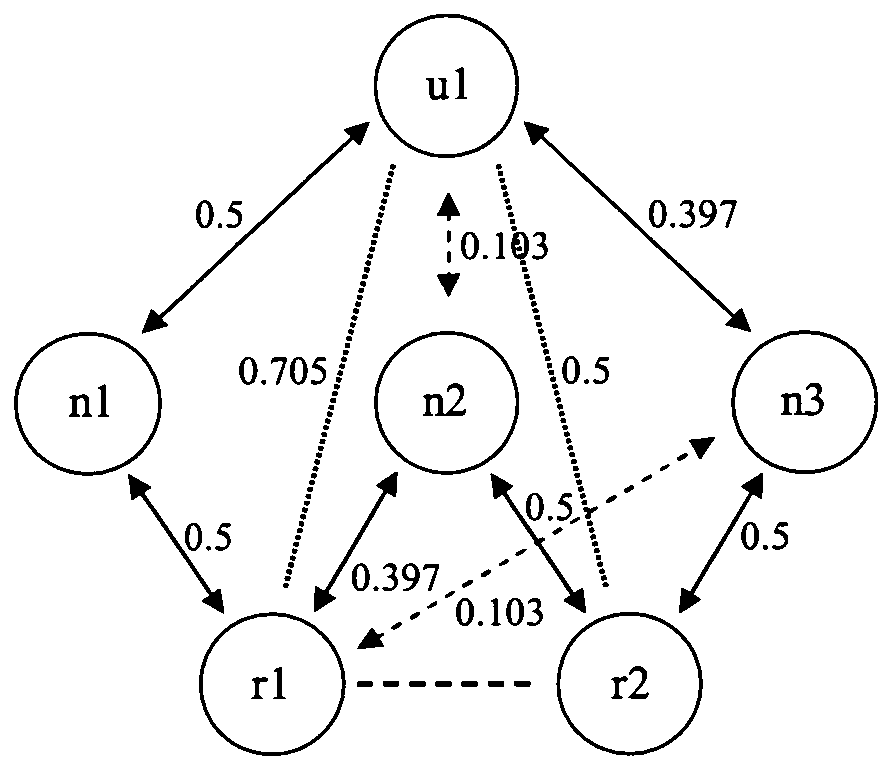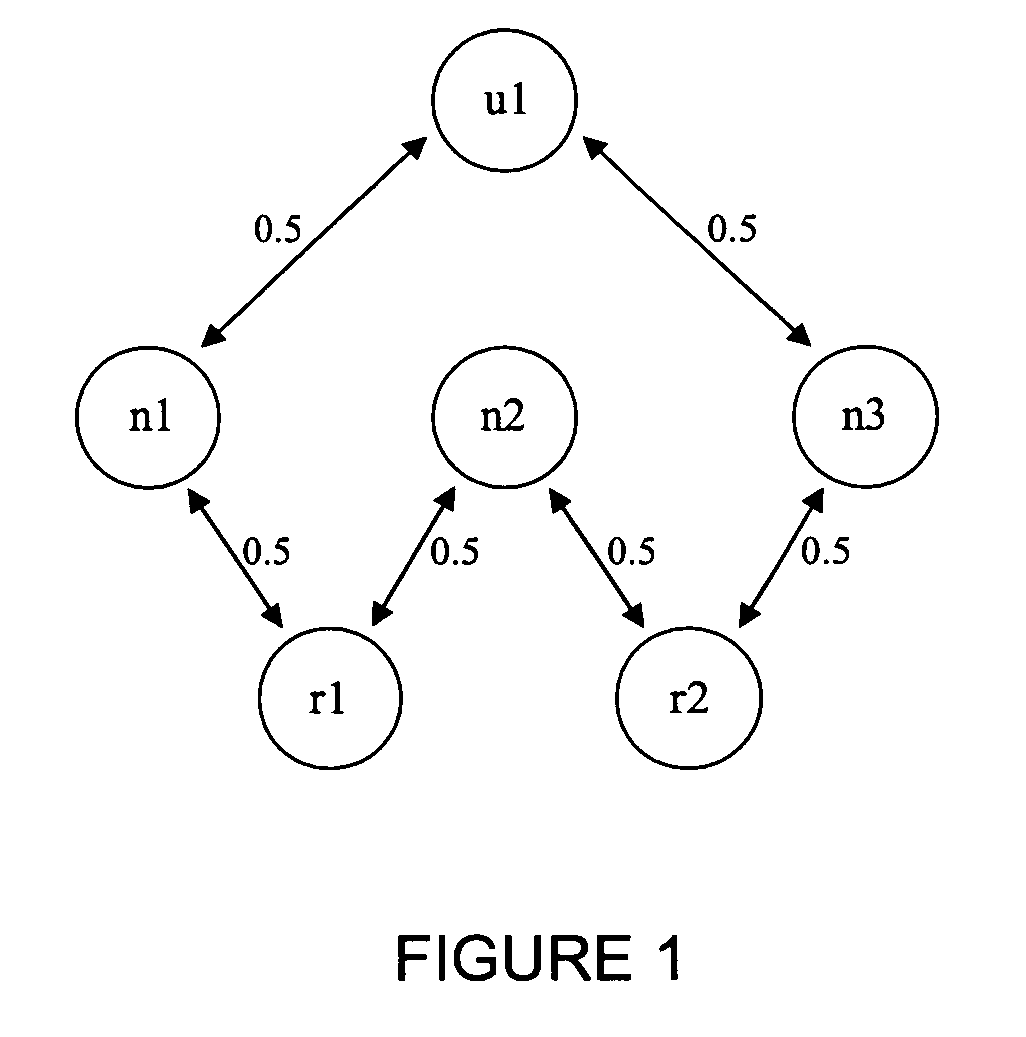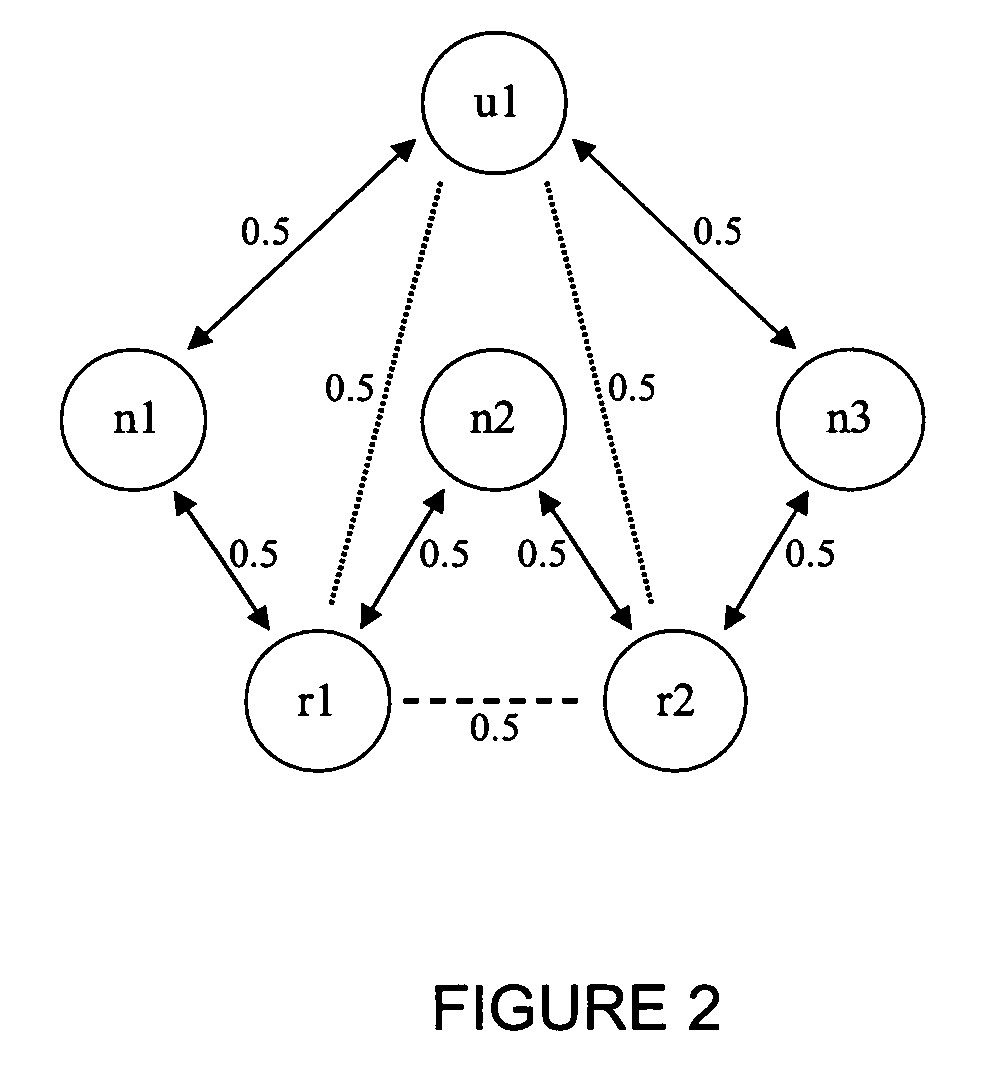Method and system of classifying, ranking and relating information based on networks
a network and information technology, applied in the field of data processing, can solve the problems of requiring expensive computing process power, needing re-operation, and difficulty in having a dynamic and individual rank measure between any element of the network, so as to facilitate clustering and improve the effect of processing
- Summary
- Abstract
- Description
- Claims
- Application Information
AI Technical Summary
Benefits of technology
Problems solved by technology
Method used
Image
Examples
Embodiment Construction
[0021]Although the following detailed description contains many specifics for the purposes of illustration, anyone of ordinary skill in the art will appreciate that many variations and alterations to the following details are within the scope of the invention.
[0022]The present invention provides a method of classifying, qualifying and relating information. This method is referred to herein as Active Rank. The method utilizes a network built from semantic, conceptual, numeric, etc., relations between elements of different sets that are structurally alike, understanding structurally alike as different sets that can be related to the same group of network nodes. The system is based on dynamics that underlie the information network built from the interaction among the different elements mentioned before. For this reason, it is possible to define a ranking system that depends not only on the structure of the links of the network, but also on interest profile of each particular element. A...
PUM
 Login to View More
Login to View More Abstract
Description
Claims
Application Information
 Login to View More
Login to View More - R&D
- Intellectual Property
- Life Sciences
- Materials
- Tech Scout
- Unparalleled Data Quality
- Higher Quality Content
- 60% Fewer Hallucinations
Browse by: Latest US Patents, China's latest patents, Technical Efficacy Thesaurus, Application Domain, Technology Topic, Popular Technical Reports.
© 2025 PatSnap. All rights reserved.Legal|Privacy policy|Modern Slavery Act Transparency Statement|Sitemap|About US| Contact US: help@patsnap.com



